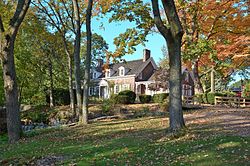
Nutley is a township in Essex County, in the U.S. state of New Jersey. As of the 2020 United States census, the township's population was 30,143, an increase of 1,773 (+6.2%) from the 2010 census count of 28,370, which in turn reflected an increase of 1,008 (+3.7%) from the 27,362 counted in the 2000 census.
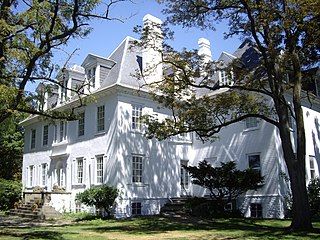
The Clermont State Historic Site, also known as the Clermont estate, the Clermont Manor or just Clermont, is a New York State Historic Site in southwestern Columbia County, New York, United States. It protects the former estate of the Livingston family, seven generations of whom lived on the site over more than two centuries.

Ringwood Manor, located in Passaic County, New Jersey, was the site of an ironworks and home to a number of well-known ironmasters from the 1740s to the late 19th century. The current manor house was not built until 1807.

The Cornelius Low House is a Georgian manor in Piscataway, Middlesex County, New Jersey, United States, built in 1741 at Raritan Landing. The Cornelius Low House is listed on the New Jersey Register of Historic Places and National Register of Historic Places. The house currently holds the Cornelius Low House/Middlesex County Museum.

Oxford Furnace is a historic blast furnace on Washington Avenue, near the intersection with Belvidere Avenue, in Oxford, Oxford Township, Warren County, New Jersey. The furnace was built by Jonathan Robeson in 1741 and produced its first pig iron in 1743. The first practical use in the United States of hot blast furnace technology took place here in 1834. The furnace was added to the National Register of Historic Places on July 6, 1977 for its significance in industry during the 19th century. It was later added as a contributing property to the Oxford Industrial Historic District on August 27, 1992.

The Crailo State Historic Site is a historic, fortified brick manor house in Rensselaer, New York which was built in 1707. The word Crailo is derived from kraaien bos and refers to Kiliaen van Rensselaer's estate in Huizen, Holland, which is also named "Crailo". Fort Crailo is listed on the National Register of Historic Places.
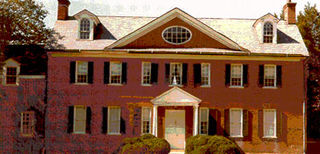
Harmony Hall, located in Fort Washington, Maryland, is managed by the United States National Park Service as part of the National Capital Parks-East system. It has been a National Park Service site since 1966. Harmony Hall is a 2+1⁄2-story Georgian country house built of red brick during the eighteenth century. It is surrounded by 65 acres (26 ha) of land on Broad Creek, a Potomac River tributary.
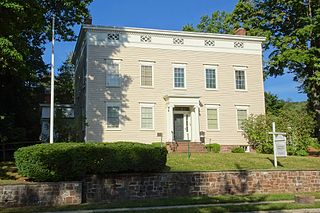
The Crane House and Historic YWCA is a federal-style home located at 110 Orange Road in Montclair, Essex County, New Jersey. The house has had a rich history and was added to the National Register of Historic Places on March 14, 1973, for its significance in architecture, conservation, and industry.
The Lenape Trail is a trail through Essex County, connecting many county parks and reservations, wooded spaces, and historical sites. It begins in Newark, New Jersey and ends in Millburn, New Jersey. It was established in 1982. It is the fifth longest trail in the state behind the Delaware and Raritan Canal Trail, the Appalachian Trail, the completed section of the Highlands Trail in the state and the Batona Trail. The Lenape trail traverses Newark and its suburbs, as well as the Watchung Mountains and Passaic Meadows. Because of the steepness of the Watchung Mountains and the flood-prone nature of the Passaic Meadows, the former basin of Glacial Lake Passaic, these areas have remained much less developed than the rest of the northeastern part of the state. This trail therefore offers hikers an opportunity to see cultural and historical sites of an urban trail, as well as large natural and undeveloped areas. The trail's proximity to New York City and the various ridges it traverses, including Forest Hill, Orange Mountain, and Second Watchung Mountain, offer many views of the skyline. The Lenape Trail forms a segment of the Liberty-Water Gap Trail and incorporates the West Essex Trail, the Lenape Trail's only rail-to-trail section. The Lenape Trail also connects with Morris County's Patriots Path trail system on its western terminus.

The Grover Cleveland Birthplace is a historic site located at 207 Bloomfield Avenue in Caldwell, Essex County, New Jersey, United States. It is the only house museum dedicated to U.S. President Grover Cleveland.

Moravian Church is a historic church building located on Swedesboro-Sharptown Road in the Oliphant's Mill section of Woolwich Township, Gloucester County, New Jersey. The church was dedicated in 1789 and documented by the Historic American Buildings Survey (HABS) in 1938. It was added to the National Register of Historic Places on April 3, 1973, for its significance in architecture and religion. The property is currently under the stewardship of the Gloucester County Historical Society.
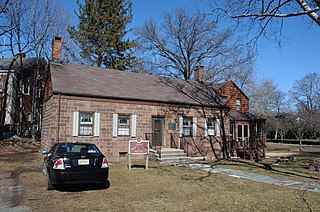
The Vreeland Homestead is located in Nutley, Essex County, New Jersey, United States. The house was built in 1702 and added to the National Register of Historic Places on October 14, 1994.
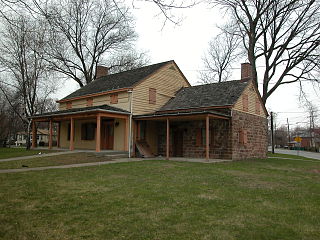
The Van Ness House, also known as the Peter Van Ness Farmhouse, is located at 236 Little Falls Road in the township of Fairfield in Essex County, New Jersey. The house was built about 1740. It was documented by the Historic American Buildings Survey in 1939. It was added to the National Register of Historic Places on July 29, 1977, for its significance in agriculture and architecture.

The Williams-Harrison House, also known as the Harrison House, is located at 126 Eagle Rock Avenue in the borough of Roseland in Essex County, New Jersey, United States. It was documented by the Historic American Buildings Survey (HABS) program in 1936. The house was added to the National Register of Historic Places on March 13, 1979, for its significance in agriculture, architecture, industry, law, and politics.

The Miller-Kingsland House is located at 445 Vreeland Avenue in the town of Boonton in Morris County, New Jersey, United States. The house was built around 1740 and documented by the Historic American Buildings Survey (HABS) in 1938. It was added to the National Register of Historic Places on July 24, 1973, for its significance in architecture and exploration/settlement.
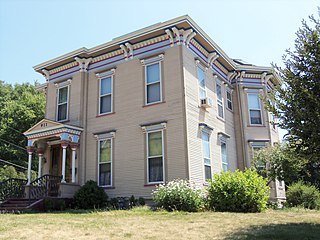
The James E. Lindsay House is a historic building located on the east side of Davenport, Iowa, United States. It has been listed on the National Register of Historic Places since 1984.

The Van Riper House is a Bergen Dutch sandstone house located in Nutley, New Jersey, built in 1708. The building was owned in the 20th century by ITT Corporation and served as executives' residence and offices. In 2001, the building and 0.9 acres of land were transferred to the municipal government who then leased it to Van Riper House, Inc., a nonprofit corporation, for twenty years, with the intention that it would be restored and preserved.

The Van Horne House is a historic building at 941 East Main Street near Bound Brook in Bridgewater Township, Somerset County, New Jersey. The house was built c. 1750 and also known as Phil's Hill, after its owner, Philip Van Horne. It served as the headquarters for American General Benjamin Lincoln in 1777, during the American Revolutionary War, in particular the Battle of Bound Brook. Later, it served as the headquarters for American General William Alexander, Lord Stirling during the second Middlebrook encampment (1778–79). The house, on the early-18th-century Old York Road that connected Philadelphia to New York City, was a New Jersey landmark during the war. Since 2002, the Heritage Trail Association has used the house as its headquarters, including an exhibit space. It was added to the National Register of Historic Places on March 8, 2002, for its locally significant Colonial Revival architecture from 1937 to 1944.

The John Smith House is a historic building located at 124 Washington Valley Road in the Washington Valley section of Morris Township in Morris County, New Jersey, United States. It was documented by the Historic American Buildings Survey (HABS) in 1937. The house was added to the National Register of Historic Places on January 1, 1976, for its significance in agriculture and architecture. It was designated a contributing property of the Washington Valley Historic District on November 12, 1992.

Franklin Corners is an unincorporated community located along the Passaic River at the intersection of County Route 613 and U.S. Route 202 in Bernards Township of Somerset County, New Jersey. In the 19th century, it had a grist mill, saw mill, general store, school, and several houses. The Franklin Corners Historic District, featuring Van Dorn's Mill, was listed on the National Register of Historic Places in 1975.
